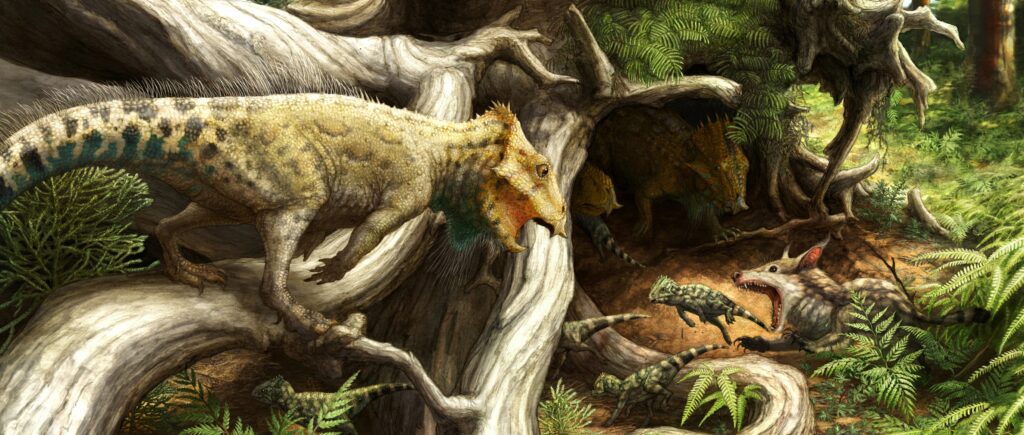In the vast landscape of prehistoric creatures, sometimes the smallest discoveries yield the most significant scientific insights. Such is the case with Aquilops americanus, a diminutive ceratopsian dinosaur that has dramatically altered our understanding of horned dinosaur evolution in North America. Discovered in 105-million-year-old rocks in Montana, this turkey-sized herbivore represents the earliest known member of the ceratopsian family in North America, despite its modest proportions. Though barely the size of a modern house cat, Aquilops has had an outsized impact on paleontological understanding, filling crucial gaps in the fossil record and providing valuable insights into dinosaur migration patterns across ancient continents.
The Discovery of Aquilops
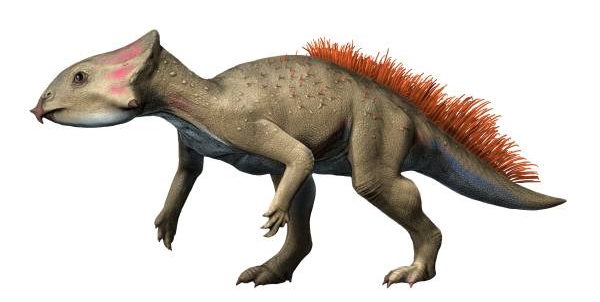
The story of Aquilops begins in 1997 when paleontologist Scott Madsen discovered a small, partially crushed skull in the Cloverly Formation of central Montana. Initially, the specimen received little attention, becoming one of countless fossils awaiting detailed study in museum collections. It wasn’t until nearly two decades later, in 2014, that a team led by paleontologist Andrew Farke formally described and named the fossil as Aquilops americanus. The name derives from Latin and Greek roots, with “Aquila” meaning “eagle” and “ops” meaning “face,” referencing the distinctive curved beak that resembled an eagle’s. This discovery represented the culmination of years of meticulous preparation and analysis, revealing a creature that would rewrite aspects of North American dinosaur history.
Physical Characteristics of the Tiny Ceratopsian
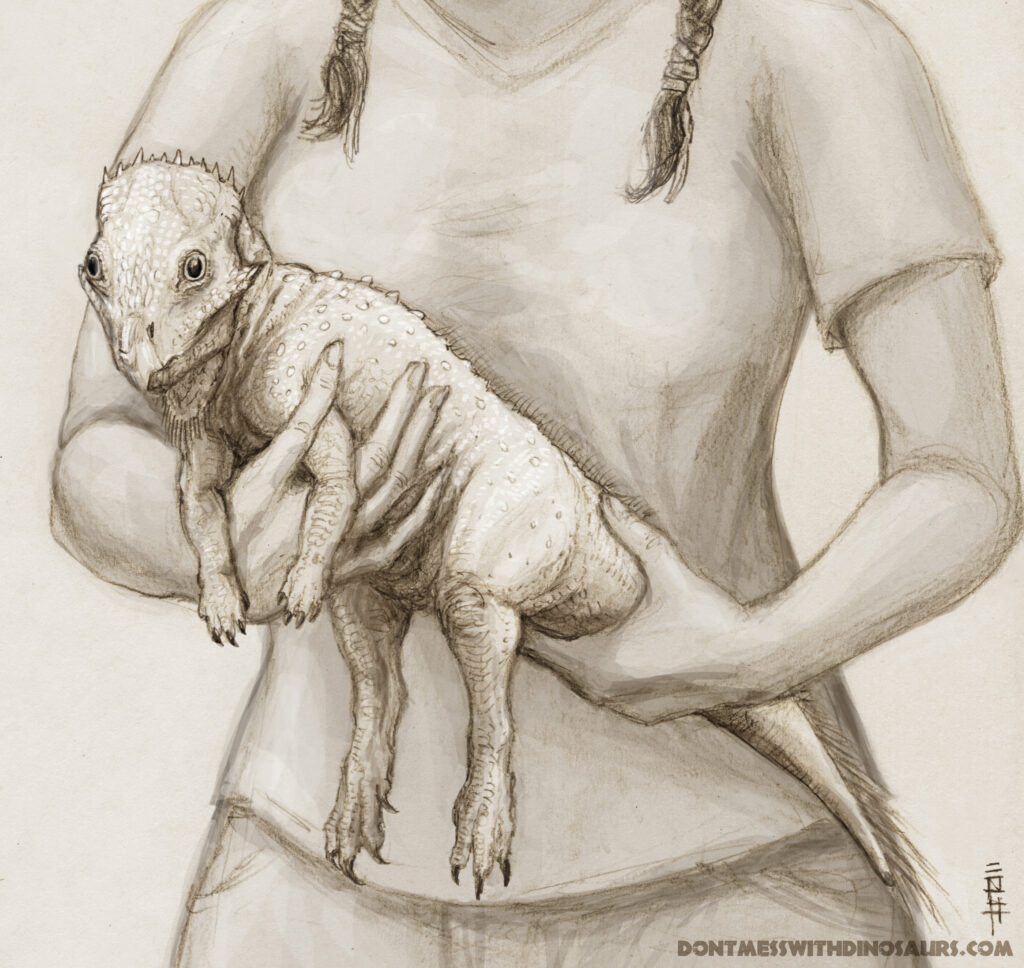
Despite being related to later giants like Triceratops, Aquilops was remarkably small, measuring only about 60 centimeters (2 feet) in length and likely weighing less than 1.5 kilograms (3.5 pounds) – roughly the size of a large domestic cat. Its most distinctive feature was its sharp, curved beak, which it likely used to crop vegetation. Unlike its famous descendants, Aquilops lacked the elaborate horns and frills that characterize later ceratopsians, instead possessing only a small horn-like projection on its cheek called a jugal boss. The skull also featured a rostral bone, forming the upper part of its beak, which is a defining characteristic of ceratopsians. The creature’s small size and primitive features place it near the base of the ceratopsian family tree, providing crucial insights into how these dinosaurs evolved their distinctive traits over millions of years.
Age and Geological Context

Aquilops lived during the Early Cretaceous period, approximately 108-104 million years ago, making it significantly older than most North American ceratopsians. The fossil was discovered in the Cloverly Formation, a geological unit spanning parts of Montana and Wyoming that preserves a rich ecosystem from this period. This formation represents an ancient floodplain environment, with seasonal rivers and lush vegetation supporting a diverse community of dinosaurs and other animals. The age of Aquilops is particularly significant because it predates other ceratopsian fossils found in North America by about 20 million years, creating what researchers call a “temporal gap” in the fossil record. This positioning in the early Cretaceous makes Aquilops a crucial puzzle piece for understanding the timing and pattern of ceratopsian evolution and migration.
Evolutionary Significance
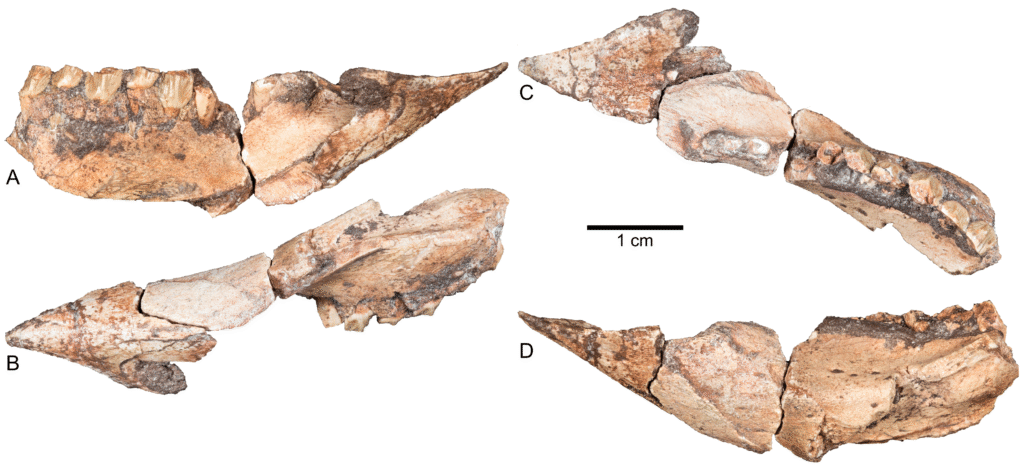
The discovery of Aquilops revolutionized our understanding of ceratopsian evolution in North America. Before this find, paleontologists had documented a robust diversity of later ceratopsians in North America dating to the Late Cretaceous period (100-66 million years ago), but the early history of the group on the continent remained mysterious. Aquilops helped fill this gap, demonstrating that ceratopsians had arrived in North America much earlier than previously confirmed. Phylogenetic analysis places Aquilops as a neoceratopsian, more advanced than the most primitive ceratopsians but less derived than later forms. Its anatomical features suggest it was closely related to Asian ceratopsians like Archaeoceratops and Liaoceratops rather than later North American groups, indicating a complex pattern of intercontinental migrations. This evolutionary positioning makes Aquilops a crucial transitional form in understanding how ceratopsians diversified and spread across the Northern Hemisphere.
Asian Connections and Migration Patterns
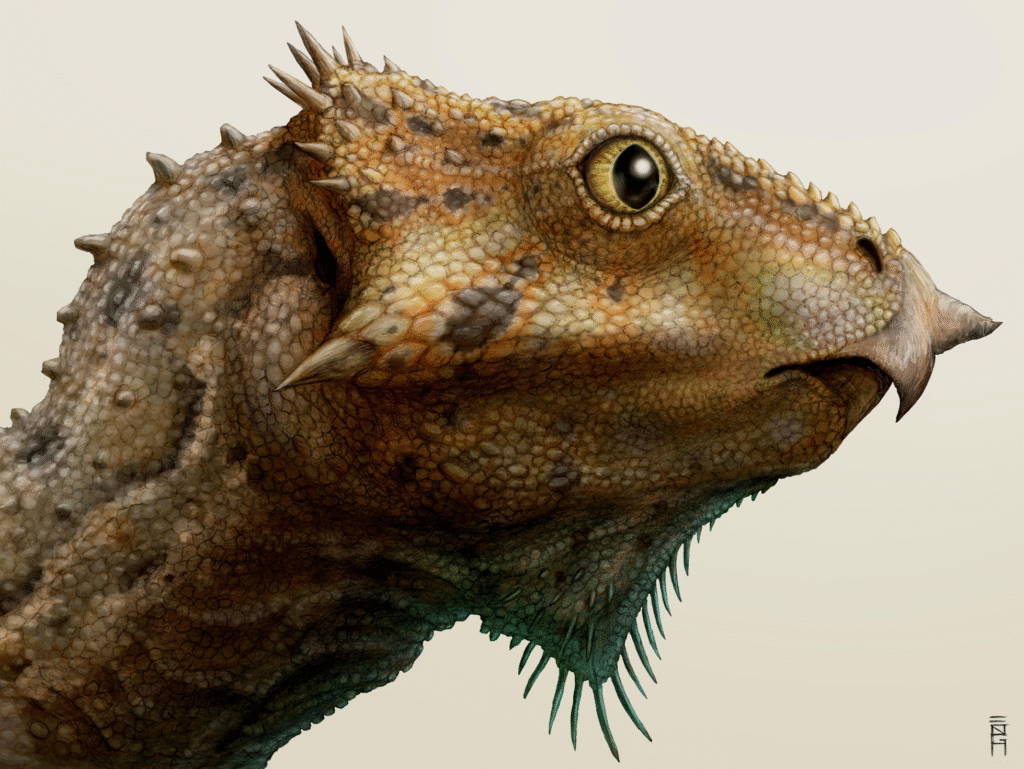
One of the most significant aspects of Aquilops is its striking similarity to ceratopsians from Asia rather than to later North American forms. Detailed anatomical comparisons reveal that Aquilops shares numerous features with Asian neoceratopsians like Archaeoceratops from China, suggesting a close evolutionary relationship. This connection provides compelling evidence for the hypothesis that ceratopsians originated in Asia and later migrated to North America across the Bering land bridge. During the Early Cretaceous, periodic land connections formed between Asia and North America as sea levels fluctuated, creating migration corridors for terrestrial animals. Aquilops likely represents one of the earliest waves of ceratopsian migration from Asia to North America, arriving long before the evolution of the more familiar horned dinosaurs like Triceratops. This intercontinental connection highlights the dynamic nature of dinosaur biogeography and the complex patterns of evolution that shaped dinosaur diversity across continents.
Diet and Feeding Behavior
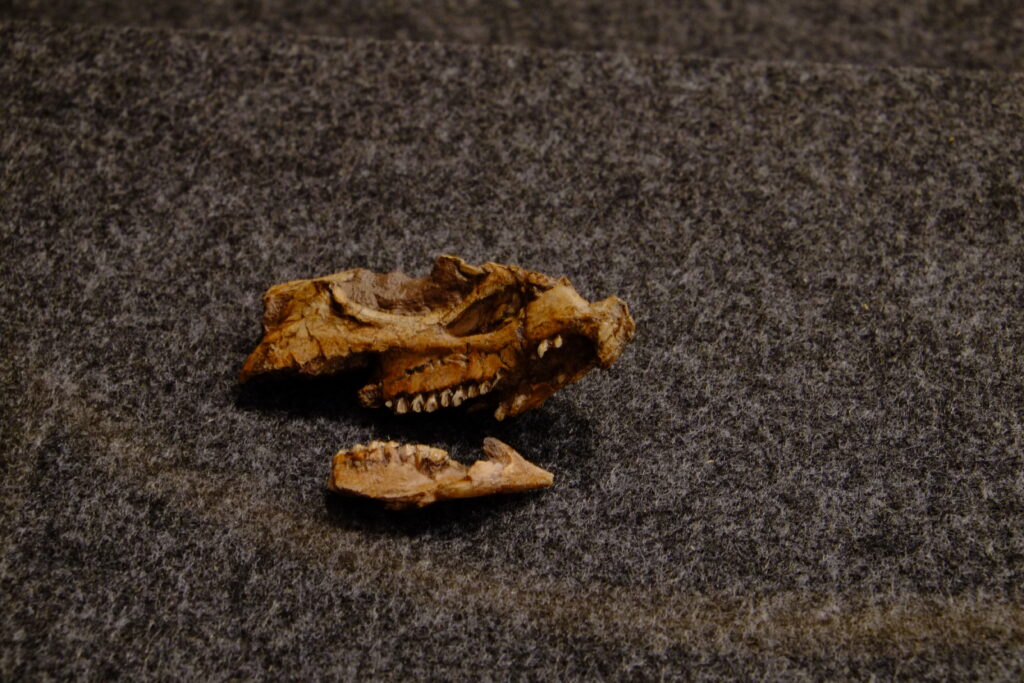
Aquilops was an herbivore with specialized adaptations for processing plant material, as evidenced by its distinctive beak and dental structure. The sharp, curved beak would have been effective for cropping vegetation, allowing Aquilops to selectively feed on specific plant parts. Behind this beak, Aquilops possessed a battery of closely packed teeth suitable for shearing tough plant material, though not as specialized as the complex dental batteries of later ceratopsians. Analysis of the jaw mechanics suggests Aquilops could perform a combination of up-and-down and front-to-back chewing motions, efficiently processing the vegetation of the Early Cretaceous landscape. The relatively unspecialized dentition indicates that Aquilops was likely a generalist herbivore, potentially feeding on ferns, cycads, and early flowering plants that were beginning to diversify during this time. This feeding ecology represents an early stage in the evolution of the more specialized herbivory seen in later ceratopsians.
Habitat and Paleoenvironment
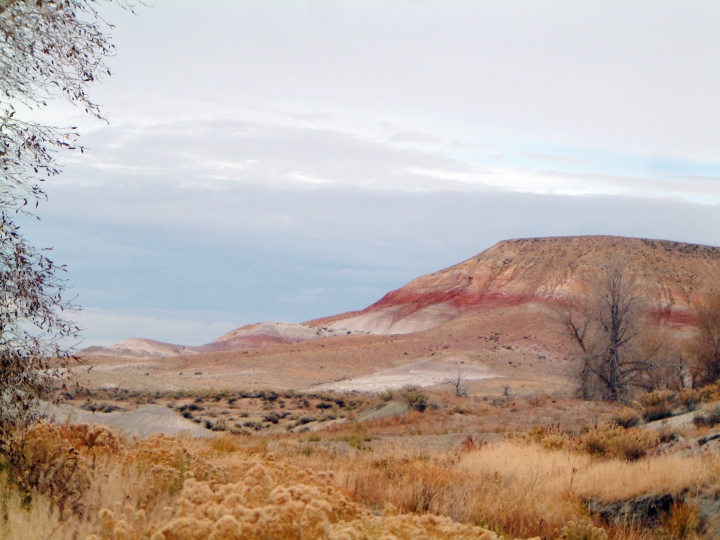
The Cloverly Formation, where Aquilops was discovered, preserves evidence of a dynamic, seasonal environment quite different from modern Montana. During the Early Cretaceous, this region experienced a warm, subtropical climate with distinct wet and dry seasons. The landscape consisted of floodplains traversed by meandering rivers, dotted with lakes and swamps, and covered with diverse vegetation including ferns, cycads, conifers, and early flowering plants. Aquilops shared this environment with a variety of other dinosaurs, including the large ornithopod Tenontosaurus, the armored ankylosaur Sauropelta, and predators like the dromaeosaurid Deinonychus. Sedimentological evidence indicates that seasonal flooding was common, creating a dynamic landscape where animals needed to adapt to changing conditions. As a small herbivore, Aquilops likely exploited understory vegetation and may have used its agility to avoid the larger predators that shared its habitat.
Comparison to Later Ceratopsians
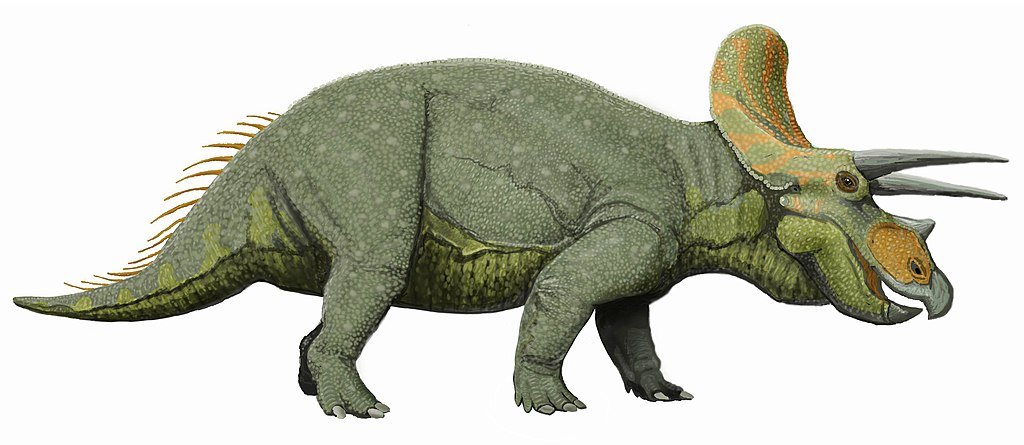
The contrast between Aquilops and its later, more famous relatives highlights the remarkable evolutionary trajectory of ceratopsian dinosaurs. While Aquilops was a diminutive animal with minimal cranial ornamentation, later North American ceratopsians like Triceratops grew to lengths exceeding 9 meters (30 feet) and developed elaborate defensive and display structures. Aquilops lacked the prominent nasal and brow horns that characterize later ceratopsians, possessing only a small jugal boss (cheek horn). Similarly, it had no neck frill or shield, a feature that would become progressively more elaborate in later forms, culminating in the massive, ornate frills of chasmosaurines like Torosaurus. The dental battery of Aquilops was also relatively simple compared to the complex dental mechanisms of later ceratopsians, which evolved highly efficient systems for processing tough vegetation. These differences underscore the dramatic evolutionary changes that occurred in the ceratopsian lineage over approximately 40 million years, from small, primitive forms like Aquilops to the iconic horned dinosaurs of the Late Cretaceous.
Scientific Naming and Classification
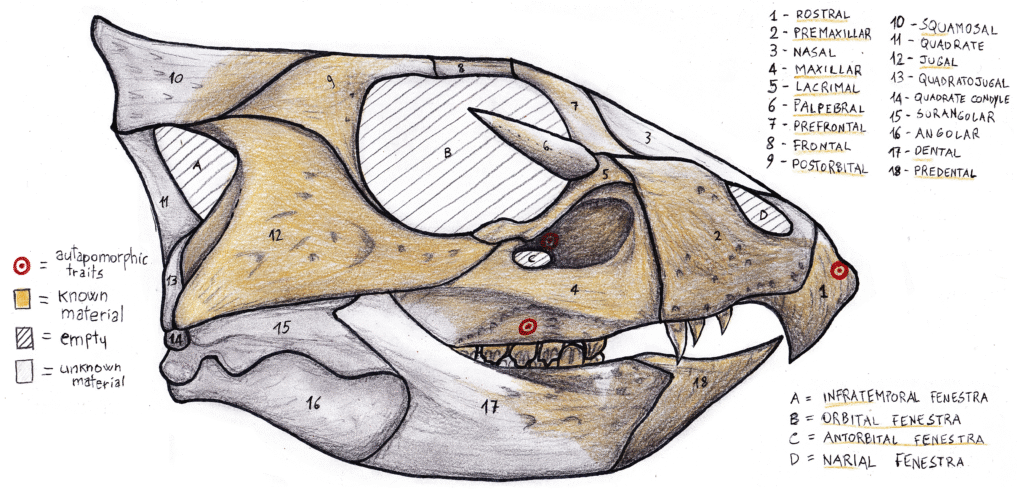
The scientific name Aquilops americanus carries significant meaning related to the animal’s anatomy and geographical importance. The genus name “Aquilops” combines the Latin word “aquila” (eagle) with the Greek suffix “ops” (face), referring to the creature’s distinctive curved, eagle-like beak. The species name “americanus” acknowledges its significance as the first definitive neoceratopsian discovered in North America. Taxonomically, Aquilops belongs to Neoceratopsia, a group within the larger Ceratopsia clade, which itself falls within Marginocephalia (alongside Pachycephalosauria, the dome-headed dinosaurs) and ultimately within Ornithischia, one of the two major dinosaur groups. Within Neoceratopsia, phylogenetic analyses place Aquilops as more derived than the most primitive Asian ceratopsians like Liaoceratops, but less advanced than later forms such as Leptoceratops and the larger ceratopsids. This classification positions Aquilops at a crucial evolutionary juncture, representing an early stage in ceratopsian diversification.
Research Challenges and Fossil Preservation
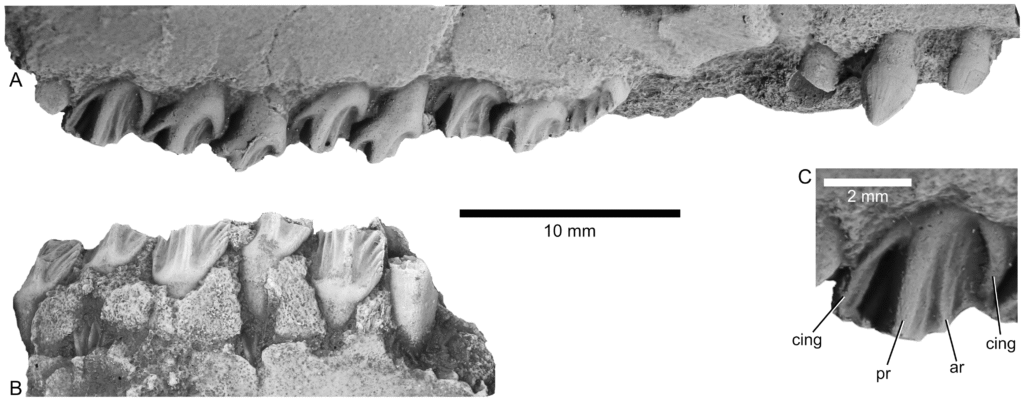
The study of Aquilops presented numerous challenges for paleontologists, primarily due to the incomplete and partially crushed nature of the only known specimen. Only the skull was recovered, measuring just 84mm (3.3 inches) in length, with no postcranial material available to provide insights into its body proportions or locomotion. The skull itself suffered taphonomic distortion during fossilization, requiring careful preparation and digital reconstruction to accurately determine its original shape and features. Additionally, the rarity of Early Cretaceous ceratopsian material in North America makes comparative analysis difficult, forcing researchers to rely heavily on Asian specimens for context. Despite these challenges, advanced techniques, including CT scanning and three-dimensional modeling, allowed researchers to extract remarkable detail from the specimen, revealing fine anatomical structures and enabling precise phylogenetic placement. The preservation quality of the specimen, despite its limitations, provided sufficient detail to establish Aquilops as a distinct genus and species, highlighting the value of even partial fossils in advancing paleontological knowledge.
Implications for North American Dinosaur Diversity
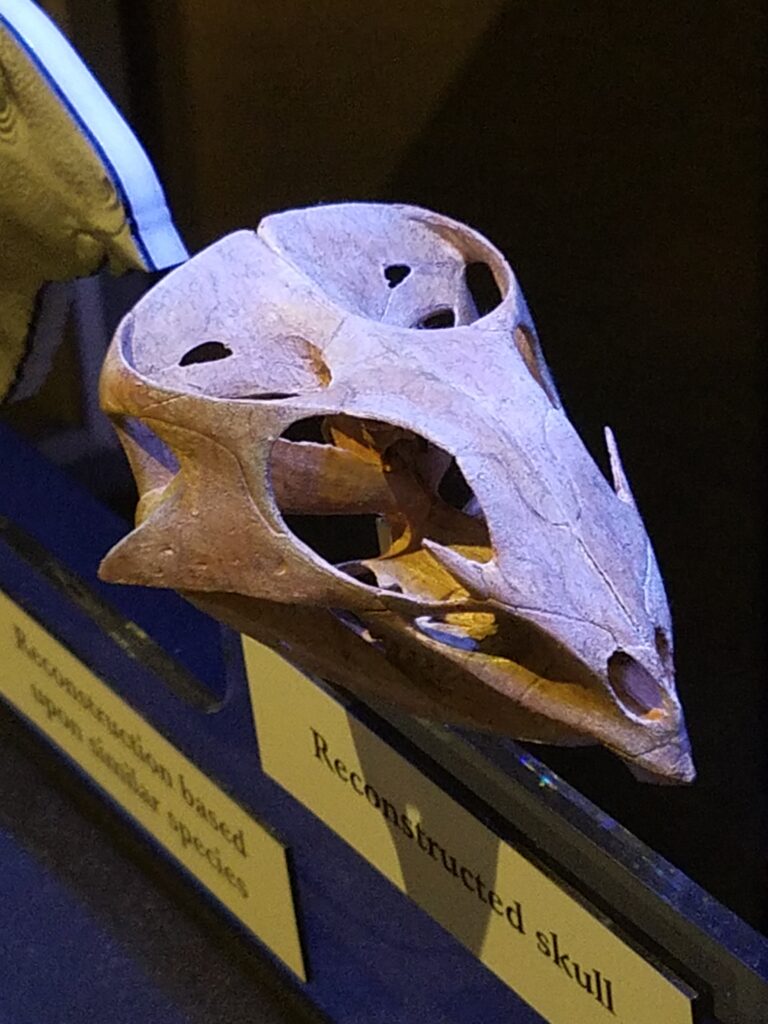
The discovery of Aquilops substantially revised our understanding of Early Cretaceous dinosaur diversity in North America. Before this find, this period was known primarily for large ornithopods, nodosaurids, and theropods, with ceratopsians conspicuously absent from the fossil record despite being well-documented in contemporary Asian formations. Aquilops filled this gap, demonstrating that ceratopsians were indeed present in North America during the Early Cretaceous, albeit represented by small, primitive forms rather than the larger, more specialized types that would later dominate. This finding suggests that Early Cretaceous North American dinosaur ecosystems were more diverse than previously recognized, with complex food webs including various small herbivores alongside larger forms. Furthermore, the presence of Aquilops indicates that faunal exchanges between Asia and North America were occurring earlier and perhaps more frequently than previously documented, pointing to a more dynamic pattern of dinosaur biogeography throughout the Cretaceous period.
Public Interest and Educational Impact
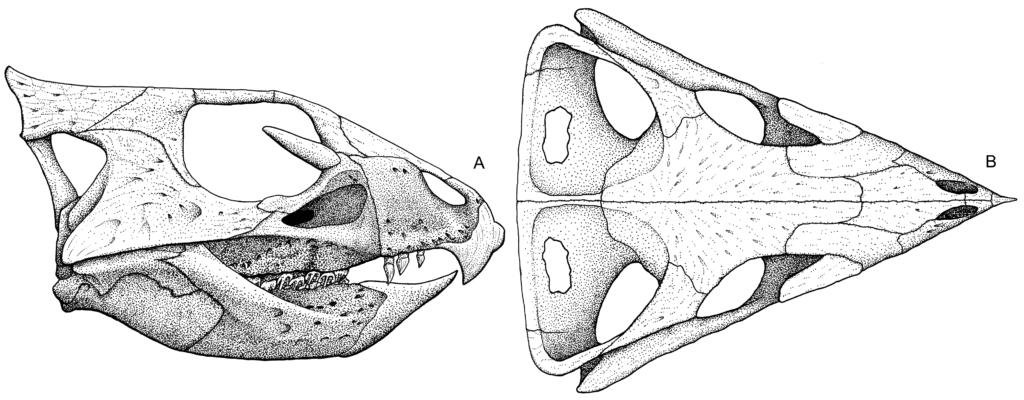
Despite its small size, Aquilops has generated significant public interest and has become an important educational tool for explaining evolutionary concepts. Museum exhibits featuring Aquilops often highlight its role in understanding dinosaur migration and evolutionary relationships, making complex scientific concepts accessible to general audiences. Life reconstructions of this diminutive dinosaur provide a striking contrast to the popular image of ceratopsians as large, rhino-like animals, demonstrating the diversity within dinosaur groups and the evolutionary changes that occurred over millions of years. The story of Aquilops also illustrates how even small, seemingly insignificant fossils can revolutionize scientific understanding, an important lesson about the nature of paleontological discovery. Educational programs frequently use Aquilops as an example of how scientists use comparative anatomy to determine evolutionary relationships, and how fossil evidence helps reconstruct ancient ecosystems and biogeographic patterns. By connecting to the familiar Triceratops while presenting a dramatically different body plan, Aquilops creates an engaging entry point for public learning about dinosaur evolution.
Future Research Directions

The discovery of Aquilops has opened numerous avenues for future research in ceratopsian paleontology. One primary goal is discovering additional specimens of Aquilops or related forms, particularly postcranial material that could provide insights into its locomotion and body proportions. Researchers are also intensifying searches in Early Cretaceous formations across western North America, hoping to find intermediate forms that might bridge the temporal gap between Aquilops and later ceratopsians. Detailed comparative studies between Aquilops and contemporary Asian ceratopsians continue to refine our understanding of intercontinental relationships and migration patterns. Additionally, paleoenvironmental research aims to better understand the ecological conditions that facilitated ceratopsian dispersal between continents, including climate patterns and sea level fluctuations that affected land bridge connections. Developmental studies comparing Aquilops with juvenile specimens of later ceratopsians may also help distinguish between primitive traits and those related to its small size. As analytical techniques advance, researchers hope to extract additional data from the existing specimen, potentially including information about growth rates, sensory capabilities, and even dietary preferences through microscopic wear patterns on its teeth.
Conclusion: A Small Dinosaur with Enormous Scientific Impact
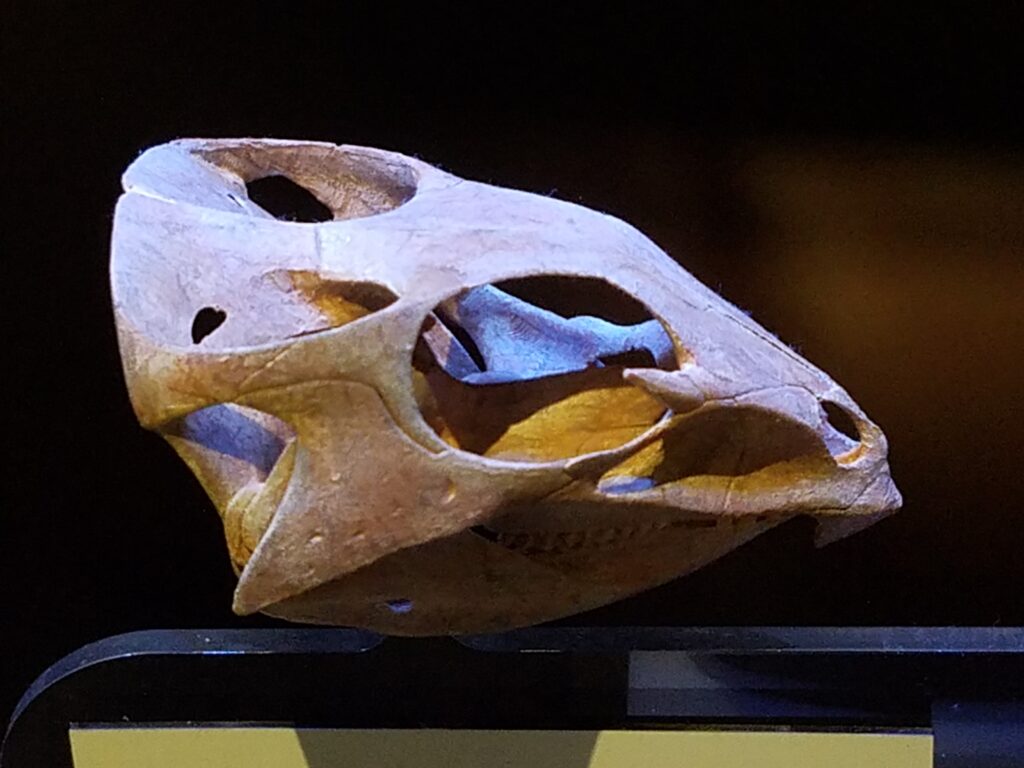
Aquilops americanus may be diminutive in size, but its scientific importance towers over many larger dinosaur discoveries. As the earliest confirmed neoceratopsian in North America, this turkey-sized herbivore has fundamentally altered our understanding of ceratopsian evolution and biogeography, demonstrating earlier and more complex patterns of dinosaur migration than previously recognized. The stark contrast between this small, primitive form and the giant horned dinosaurs that would later dominate North American landscapes provides a powerful illustration of evolutionary processes acting over millions of years. Despite being known from a single, partial specimen, Aquilops has filled critical gaps in the fossil record and continues to inspire new research directions in paleontology. Perhaps most importantly, it reminds us that in science, significance isn’t measured by size – sometimes the smallest discoveries can yield the most profound insights into our planet’s distant past.

